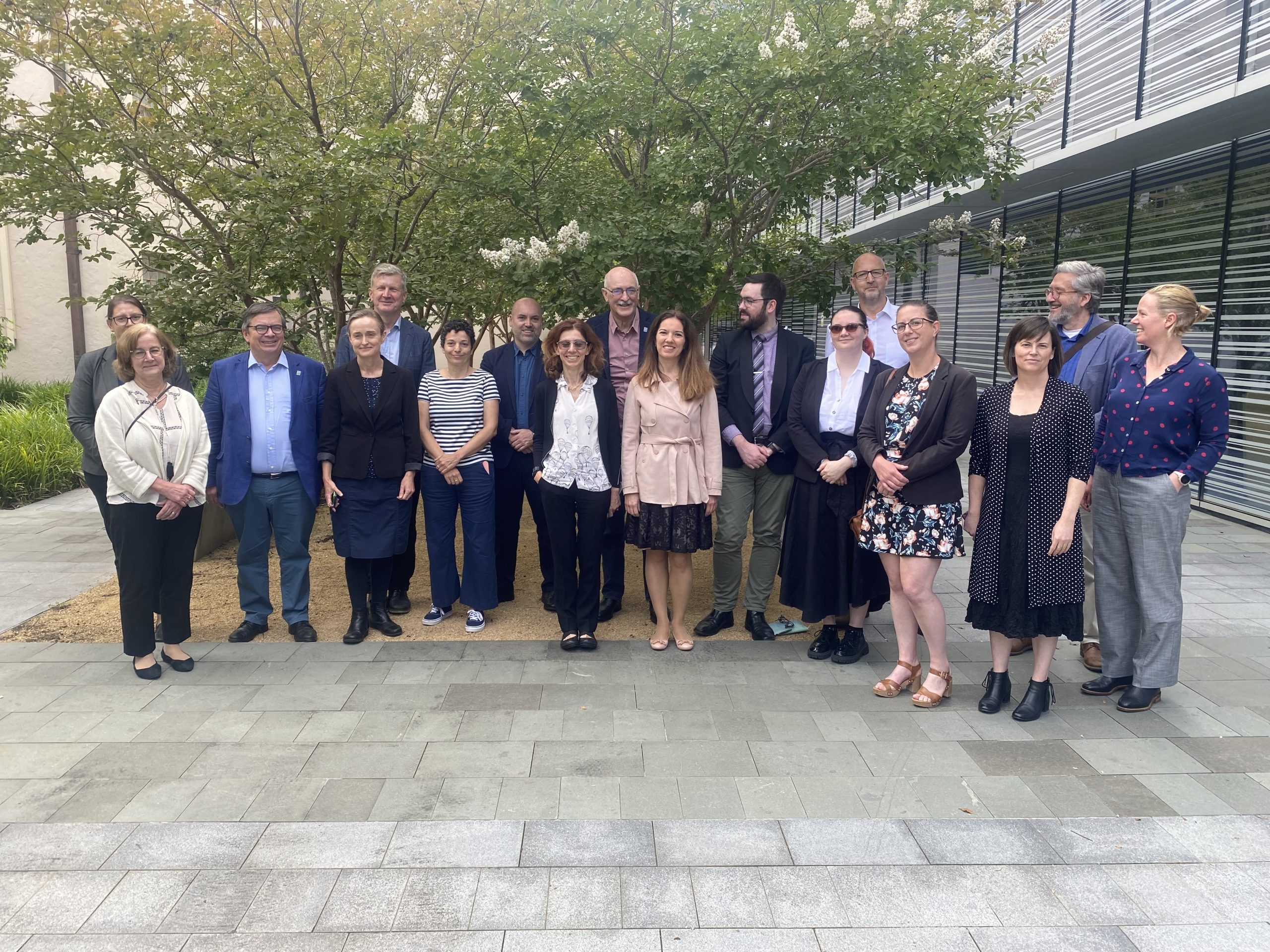The Astralis Consortium (formally known as Australian Astronomical Optics) was established in July 2018 as part of an initial ten-year collaboration between four parties in response to the Commonwealth’s plan for a National Optical Astronomy Instrumentation Capability. The partners include three universities – Macquarie University, The Australian National University (ANU) and The University of Sydney, with AAL as the fourth member of the consortium.
Several of the major projects currently managed by Astralis take advantage of the Australia-European Southern Observatory (ESO) Strategic Partnership, including the Australian ESO Positioner (AESOP) for the 4-metre Multi-Object Spectrograph Telescope (4MOST) system for VISTA telescope, the MAVIS Imager-Spectrograph designed for operation on the ESO’s Very Large Telescope Adaptive Optics Facility (AOF); Heimdallr (the fringe-tracking system) and APN (Advanced Photonic Nuller). Both Heimdallr and APN are components for the Asgard instrument that will be deployed at ESO’s VLT Interferometer, enabling high-contrast and high-resolution imaging. Astralis supports the data output of ESO telescopes with the ESO Pipeline Software project. Astralis also recently initiated a concept design study for the new ESO instrument BlueMUSE, a blue-optimised, medium spectral resolution, integral field spectrograph for the VLT.
Astralis is leading the design and construction of MAVIS, the $AU55-million adaptive-optics system on the ESO’s Very Large Telescope (VLT), one of the world’s most powerful ground-based optical telescopes.
The MAVIS project, involving Astralis-AITC, Astralis-AAO and European partners successfully passed its Preliminary Design Review in March 2023. This was the culmination of over two years of work by a team of 100 scientists, engineers, students and managers from Australia, Italy and France. Astralis-AITC is managing the project and hosting the Project Office. The project delivered 2500 pages of documentation prior to the review, which followed a very strict process set by the European Southern Observatory (ESO). The team has received high praise from the ESO review board for the quality of the documentation, as well as for the team’s collaborative spirit and professionalism. The project successfully passed the review and is now proceeding into phase C, the final design phase. MAVIS is often put forward by ESO as a well-managed and exemplary project. This was a significant milestone for the MAVIS team and a major accomplishment for the project.
As the world’s first multi-conjugate adaptive optics visible imager and spectrograph, MAVIS will be a unique and powerful instrument that will serve a very large number of key science projects.
Two major milestones for ESO instrumentation were achieved. The full optical specification of the primary beam train for the Heimdallr instrument for ESO’s VLT was completed. The Heimdallr instrument is the core enabling fringe-tracking technology for the entire Asgard suite for the VLT. The Asgard instruments are a diverse suite of back-end beam combiners spanning different wavelength ranges and offering single mode interferometric spectrometer, high sensitivity science instrument with fringe tracker, single-mode Kernel-nuller and high-contrast imager in the mid-IR.
The VLT-BlueMUSE, a proposed blue-optimised, medium spectral resolution, integral field spectrograph for the VLT completed its preliminary design phase (A0) review that was held in Lyon, France. The BlueMUSE will extend capability of the MUSE instrument successfully deployed to the VLT in 2014. The BlueMUSE Consortium of institutes in Europe and Australia is led by the University of Lyon. The project office commended the presentation delivered by the AAO-Astralis team. Next phase (A) of the project is scheduled to start early 2024.
MANIFEST is the fibre positioning facility for the Giant Magellan Telescope. It is designed to place a variety of optical fibre payloads (high-multiplex single fibres, image slicers, or IFUs) on tens or hundreds of celestial targets simultaneously, and to feed the light to GMACS, G-CLEF, or other future GMT instruments. MANIFEST Conceptual Design phase 2 review was successfully held with GMTO in November 2022. The review panel was very interested to see the positioner technology trade-off study for their NSF review and had positive comments regarding the work and documents presented.
The ESO delegation hosted by the Department of Industry, Science and Resources (DISR) and facilitated by AAL in November 2022, visited all three Astralis nodes. AAO-Astralis hosted a day for the discussion of data management with a positive reception from both ESO and government representatives. The key message from the ESO delegation was that Australian instrument builders were in demand to support ESO priority projects. Public events were organised including the Allison-Levick lecture at Macquarie University and several radio and TV appearances by ESO and Australian astronomers.

AAL supports the Astralis Consortium with funding from the National Collaborative Research Infrastructure Strategy (NCRIS). AAL was heavily involved in the establishment of the consortium, and as a partner provides effective and efficient oversight of the allocation of NCRIS funds and expenditure, ensuring conformity with the priorities of the Australian astronomical community.
AAL is actively involved in the activities of the Consortium, with representation on both the Astralis Board and the Astralis Management Committee. AAL also calls on the expertise of its advisory bodies, drawn from the Australian astronomical community, in its assessment of priorities for national investment in Astralis.